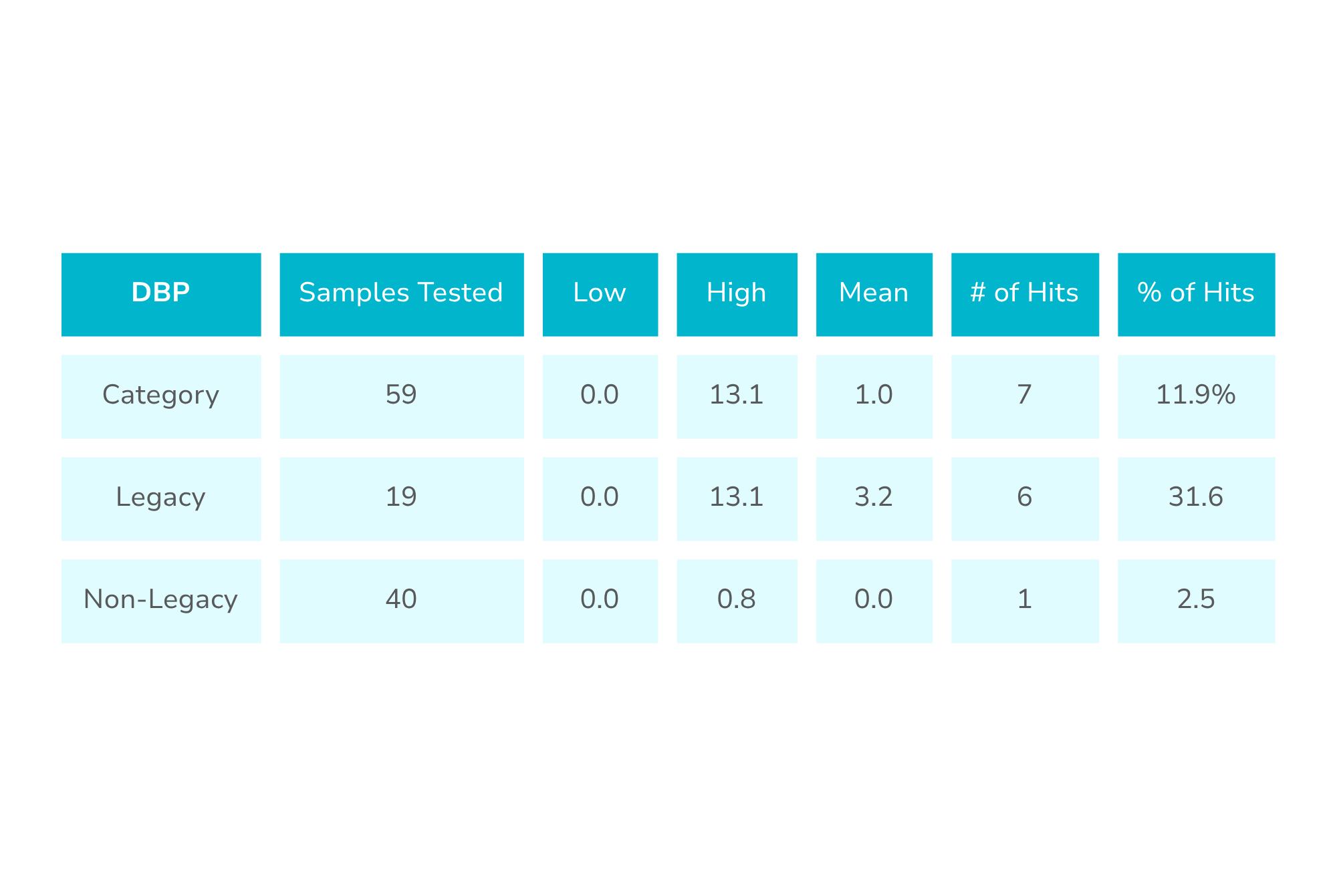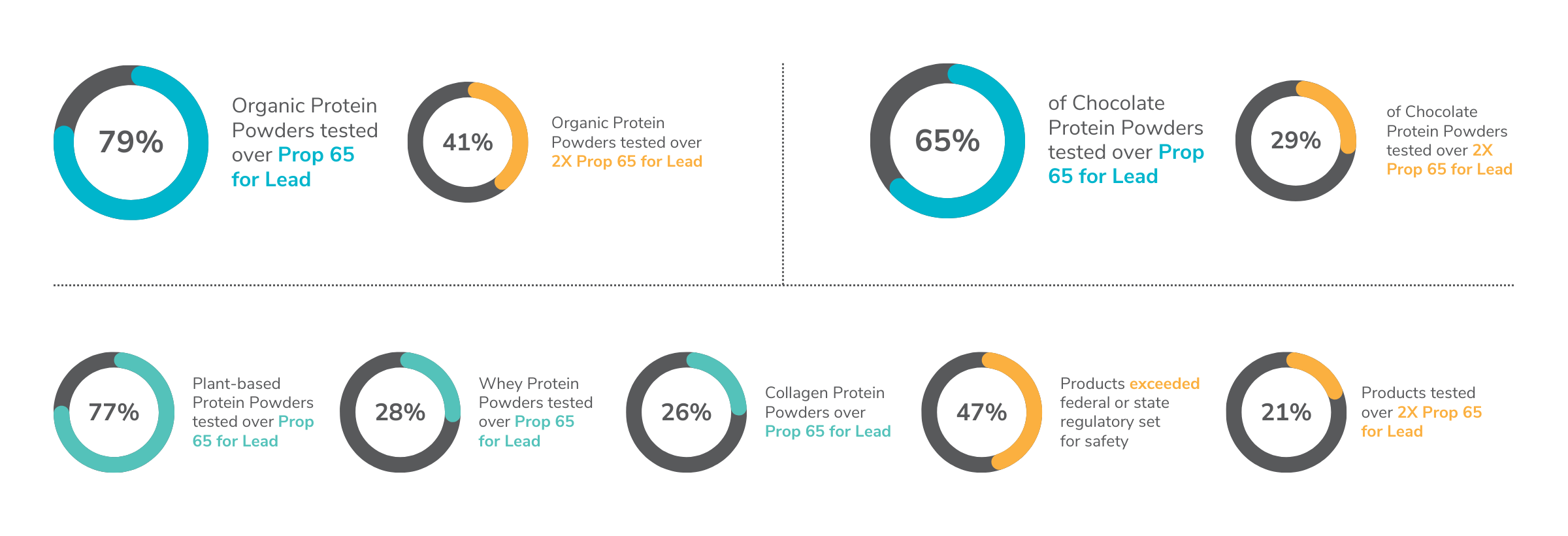

Parents around the globe are feeding their infants formula multiple times a day, relying on infant formulas to provide essential nutrition for their children. They expect the products to be free from harmful industrial chemicals.
At Clean Label Project, we don’t take safety at face value — we rely on data and scientific evidence to uncover what substances consumers are actually exposed to. Our mission is to promote and protect transparency.
We tested 59 infant formulas, including 19 Legacy products from top-selling retail and WIC-approved brands, and 40 Non-Legacy products.
Of the products tested:


Clean Label Project purchased and rigorously tested 59 of the top-selling legacy and WIC approved infant formulas, sourced from both retailer and state WIC government data.
The scope of testing assessed multiple panels of industrial and environmental contaminants.
Collaborating with Ellipse Analytics, an ISO 17025-accredited analytical chemistry lab, Clean Label Project amassed over 9,000 data points from those 59 products to benchmark the findings.
Infant formulas evaluated by Clean Label Project showed detectable levels of phthalates DBP (di-n-butyl phthalate) and DEHP (di(2-ethylhexyl) phthalate).
To put this into perspective, Clean Label Project’s partner lab, Ellipse Analytics, tested more than 40 infant formula products for certification across 2025 – during those tests, only one product reported trace levels of DBP (<1 ppb), and just four tested positive for DEHP. None of these infant formulas tested positive for either BPA or BPS.
Discovering DBP and DEHP in more than 90% of our infant formula category study samples prompted us to investigate the various pathways through which these plastic chemicals (phthalates and bisphenols) could enter infant formula products.
DBP (Di-n-butyl phthalate) and DEHP (Di(2-ethylhexyl) phthalate) are plastic chemical phthalates, or plasticizers, and studies have shown they act as endocrine disrupters that can also cause reproductive and developmental harm in children.
Health risks include reduced male fertility, developmental problems in children such as changes in growth or behavioral patterns, and increased risks for obesity, type 2 diabetes, and allergic diseases. These chemicals can be absorbed through skin contact, inhalation of
dust and air, or ingestion from contaminated products and are of particular concern for children and during pregnancy.
There are no comprehensive federal regulations specifically addressing dietary exposure to industrial chemicals in food and medicine, as most safety measures concentrate on physical and microbiological contaminants.
Every year, Clean Label Project conducts 8-12 category studies, which continually find a high percentage of samples containing phthalates. DEHP appears on the FDA’s GRAS list and, due to its role as a plasticizer enhancing plastic flexibility, is commonly found in components of machinery used in food and consumer goods production, including industrial belts, processing equipment, bottles, bags, gaskets, etc…
Over the past decade, the Clean Label Project has analyzed bisphenols (BPA and BPS) across a range of product categories. While BPA and BPS were frequently found in earlier studies, they are now rarely detected. Given this, the detection of bisphenols in 21% of legacy and WIC approved infant formula products is unexpected.
DBP (di-n-butyl phthalate) and DEHP (di(2-ethylhexyl) phthalate) can contaminate infant formula products through several different pathways.
DBP can leach into infant formula primarily through migration from plastic packaging and food processing equipment.
DEHP is a plasticizer used to make plastics more flexible. It can enter food products through processing equipment and packaging materials, or through other environmental contamination. DEHP is not chemically bound to plastics, so it can easily leach into food, especially fatty or oily foods, and its migration is often increased by heat. DEHP is part of the FDA’s GRAS (Generally Recognized As Safe) list. Our research has found DEHP in many different categories we’ve tested, such as protein powder, cereal, and snack bars.
Clean Label Project contracted an independent analytical chemistry laboratory, Ellipse Analytics, to test five industrial chemical panels:
The Heavy Metals (Arsenic, Cadmium, Lead, and Mercury), were tested by Inductively Coupled Plasma – Mass Spectroscopy (ICP-MS); Phthalates were tested by Gas Chromatography – Mass Spectroscopy (GC-MS/MS); and Bisphenols, glyphosate, and pesticides were tested by Liquid Chromatography – Tandem Mass Spectroscopy (LC-MS/MS).
Our mission is to empower consumers by delivering accurate and reliable product information based on our testing and analysis of the products they buy.
This data enables consumers to make informed choices that prioritize safety and quality in the infant formula they purchase.
“We have the data to inform the standards for infant formula—products that nourish our most vulnerable population,” said Molly Hamilton, Executive Director of Clean Label Project. “It’s critical that we update these standards to ensure formulas are both nutrient-dense and clean to support the long-term health of our children.”
The following companies have infant formulas that are Clean Label Project Certified and are some of the top infant formula products in the market:
For a full list of products Clean Label Project evaluated, please visit the website at www.cleanlabelproject.org
Clean Label Project purchased and rigorously tested 160 of the top-selling protein powders, sourced from Nielsen and Amazon’s best-seller lists, and supplemented with top products from the natural and organic marketplace. It also assessed multiple panels of industrial and environmental contaminants. Collaborating with an analytical chemistry lab, Clean Label Project amassed 35,862 data points from 70 brands and 160 products to benchmark the findings.
Protein powders tested by Clean Label Project had an array of positive results for levels of arsenic, cadmium, lead, and mercury. However, 47% of products exceeded at least one federal or state regulatory set for safety, including CA Prop 65, and 21% of the samples were over 2X CA Prop 65 levels.
– Heavy metals, such as arsenic, lead, mercury, and cadmium, are naturally occurring elements found in the Earth’s crust.
They enter the environment through natural processes like volcanic eruptions, weathering of rocks, and soil erosion. Over time, they accumulate in air, water, and soil, where they can make their way into plants, animals, and eventually into human food sources. Though naturally occurring, the concentration of these metals can increase due to human activities such as mining, industrial processes, and agricultural practices, leading to higher exposure risks in food products. Given the absence of federal regulations that require proactive testing to minimize the introduction into finished products, they can be unintentionally introduced into all foods and consumer products. Interestingly, certified organic products were found to have, on average, three times the lead compared to non-organic products. This was largely due to plant-based protein powders, which tend to contain higher levels of contaminants. Our studies continue to report chocolate as a high-risk ingredient.
– 65% of Chocolate Protein Powders tested over Prop 65 levels and 29% tested over 2X Prop 65.

Bisphenols, including BPA and BPS, are well-known endocrine disruptors with significant health risks. Research has shown that BPA can interfere with insulin tolerance, potentially undermining athletic training efforts for those using protein powders (Moon et al., 2015). Additionally, BPA is linked to metabolic issues, increasing the risk of type II diabetes (Le Magueresse-Battistoni et al., 2018). Fortunately, Clean Label Project’s 2023-2024 study found a significant improvement from 2018, with BPA and BPS detected in only 3 of 160 protein powder products, compared to 55% in previous tests. Plant-based protein powders were the most contaminated, containing five times more cadmium than their whey-based counterparts. Even the flavor of protein powder played a significant role in contamination levels. Chocolate protein powders, for instance, were found to have a staggering 110 times more cadmium [1] than vanilla-flavored varieties. Meanwhile, whey-based protein powders generally showed much lower contaminant levels, highlighting the variability in product safety depending on the protein source and flavoring.
Surprisingly, there are no comprehensive federal regulations specifically targeting dietary exposure to heavy metals in food, with most safety efforts focused on physical and microbiological contaminants. However, recent discussions in Congress and the FDA are pushing for stricter standards on heavy metals and industrial chemicals in food products. States like California have created regulations, like Prop 65 that we reference. Prop 65 requires businesses to provide warnings about significant exposures to chemicals that cause cancer, birth defects or other reproductive harm. CA and MD have led the charge with transparency laws for heavy metals in baby food (CA AB899 & MD SB723).
The two primary sources of contaminants in protein powders are the contaminated soils where ingredients are grown, and the packaging used for these products. At the agricultural level, companies can hold suppliers accountable to minimize pesticide and soil contamination during the growth cycle of their ingredients. However, the good news is that packaging has seen significant improvements in terms of BPA content. Clean Label Project’s testing indicates that BPA has been nearly eliminated from packaging, reflecting the industry’s response to consumer demand and controversy surrounding this chemical.
Clean Label Project contracted an independent analytical chemistry laboratory, Ellipse Analytics, to test 6 industrial chemical panels, including heavy metals and BPA.The heavy metals, arsenic, cadmium, lead, and mercury, were tested by Inductively Coupled Plasma–Mass Spectroscopy (ICP-MS). Bisphenols and pesticides are tested by liquid Chromatography–Tandem Mass Spectroscopy (LC-MS/MS).
Our mission is to empower consumers to see beyond flashy marketing. When it comes to selecting low-contaminant options, our findings reveal that plant-based protein powders generally had the highest levels of detected contaminants, while whey-based protein powders consistently demonstrated lower levels. The data from this protein study, enables consumers to make informed choices that prioritize safety and quality in their dietary supplements. Based on our study, the products with the least lead are whey or collagen-based protein powders that are not chocolate-flavored.
The following companies have protein powders that are Clean Label Project Certified:
Stay tuned as more brands are currently going through the Certification Process.
“The food industry owes their customers an open, honest, and transparent view of how clean their ingredients are,” explains Jaclyn Bowen from Clean Label Project. “Consumers are purchasing supplement and protein products for health and performance, they expect the products to be clean.”
Transparency laws like CA AB899 and Maryland “Rudy Law” is the future for consumer trust and industry change. Clean Label Project has a Transparency certification that displays the results of all certified brands lots providing consumers with the confidence to make the right informed decisions. We believe there is a growing concern about food and supplement safety and a growing demand for transparency.
Currently only one protein company, Puori, is certified to Clean Label Project Transparency Certification but we encourage more brands to seek Transparency Certification providing consumers with the trust they deserve.